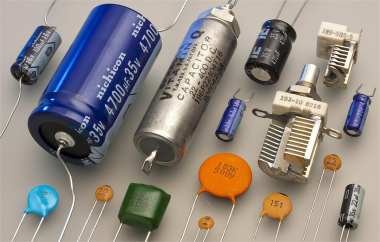
Capacitors are among the most fundamental and widely used passive components in electronics. Their roles span from filtering, decoupling, and coupling to energy storage, timing, and resonance, appearing in almost every type of electronic device. Whether in consumer electronics, communication equipment, renewable energy systems, or automotive electronics, choosing the right capacitor is critical to ensuring circuit reliability and performance. This article provides a comprehensive overview of the key parameters and classification methods for capacitors.
Catalog
2. Temperature Range Classification
5. Temperature Characteristics
I. What is a Capacitor?
A capacitor is a passive electronic component made up of two conductive electrodes separated by an insulating dielectric. It stores electrical energy in an electric field. The basic principle is to isolate charges through the dielectric, allowing the capacitor to charge and discharge. Capacitors are widely used in power management, signal processing, and filtering circuits.
II. Capacitor Parameters
1. Nominal Capacitance (CR)
Nominal capacitance refers to the capacitance value marked on the capacitor, representing its theoretical value under standard test conditions. Capacitors made from different dielectric materials vary significantly in capacitance: mica and ceramic capacitors generally have smaller values, usually below 5000 pF; paper, plastic film, and some ceramic capacitors fall in the mid-range, typically between 0.005 μF and 1.0 μF; electrolytic capacitors have larger capacitances and are commonly used in power circuits.
2. Temperature Range Classification
The temperature range classification indicates the range of ambient temperatures in which a capacitor can operate normally. Its limits are determined by the materials and construction of the capacitor. This range includes the rated temperature, which is the maximum ambient temperature at which the rated voltage can be continuously applied. It is an important environmental consideration when selecting a capacitor.
3. Rated Voltage (UR)
The rated voltage is the maximum DC voltage, AC RMS voltage, or pulse voltage that can be continuously applied across the capacitor within its temperature range. High-voltage applications require careful attention to corona discharge, which occurs due to air gaps between the dielectric and electrodes. Corona not only interferes with circuits but can also cause dielectric breakdown. Under AC or pulse conditions, corona is more likely, so the sum of DC and AC peak voltages in actual use must not exceed the rated voltage.
4. Dissipation Factor (tg δ)
The dissipation factor measures a capacitor's energy loss. It is expressed as the ratio of the capacitor's power loss to its reactive power under a sinusoidal voltage at a specified frequency. Real capacitors have an equivalent series resistance (ESR), and the loss can be calculated as: tgδ = Rs / Xc = 2πf × C × Rs where Rs is the equivalent series resistance and Xc is the capacitive reactance. Choosing capacitors with a low tg δ helps reduce self-heating and improves circuit reliability.
5. Temperature Characteristics
A capacitor's capacitance changes with temperature, usually referenced to the value at 20 °C and expressed as a percentage change at other temperatures. Capacitors made from different dielectric materials have very different temperature characteristics. For example, ceramic capacitors can be categorized as NP0 (stable type) and X7R (general type), each with distinct temperature coefficients.
6. Lifespan
The lifespan of a capacitor is significantly affected by temperature. High temperatures accelerate the chemical aging and performance degradation of the dielectric material. Therefore, when designing thermal management and selecting capacitors, it is essential to consider the operating ambient temperature to estimate the expected lifespan.
7. Insulation Resistance
Insulation resistance reflects the dielectric's insulating performance. As temperature rises, increased electron activity can lower the insulation resistance. High insulation resistance reduces leakage current and improves circuit efficiency. This parameter is especially critical in high-temperature environments.
III. Capacitor Types
Capacitors can be divided into fixed and variable types. Fixed capacitors are further classified by dielectric material into mica, ceramic, paper or plastic film, electrolytic, and glass-glazed types. Among these, electrolytic capacitors are polarized, have high capacitance, and are suitable for power filtering. Variable capacitors commonly use glass, air, or ceramic as dielectrics, allowing adjustable capacitance, and are mainly used in tuning circuits.
IV. Conclusion
Understanding a capacitor's key parameters and classification is fundamental to electronic design and component selection. Nominal capacitance (CR), temperature range classification, rated voltage (UR), dissipation factor (tg δ), temperature characteristics, lifespan, and insulation resistance directly affect circuit reliability. In practical circuit design, it is important to consider the application scenario and comprehensively evaluate capacitance, voltage, temperature range, and losses to ensure stable and efficient operation of electronic devices.




